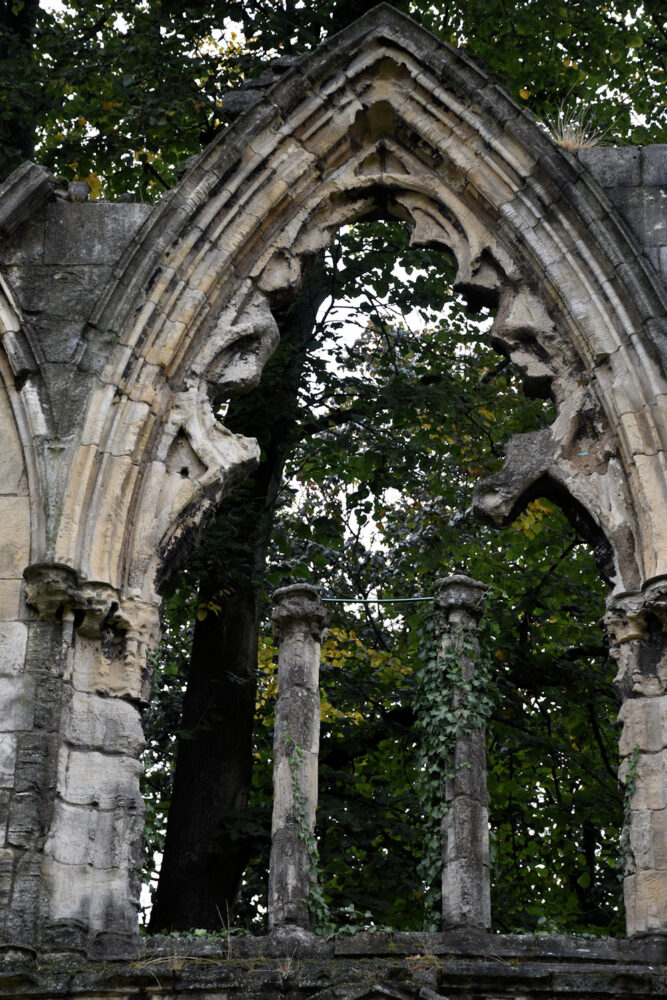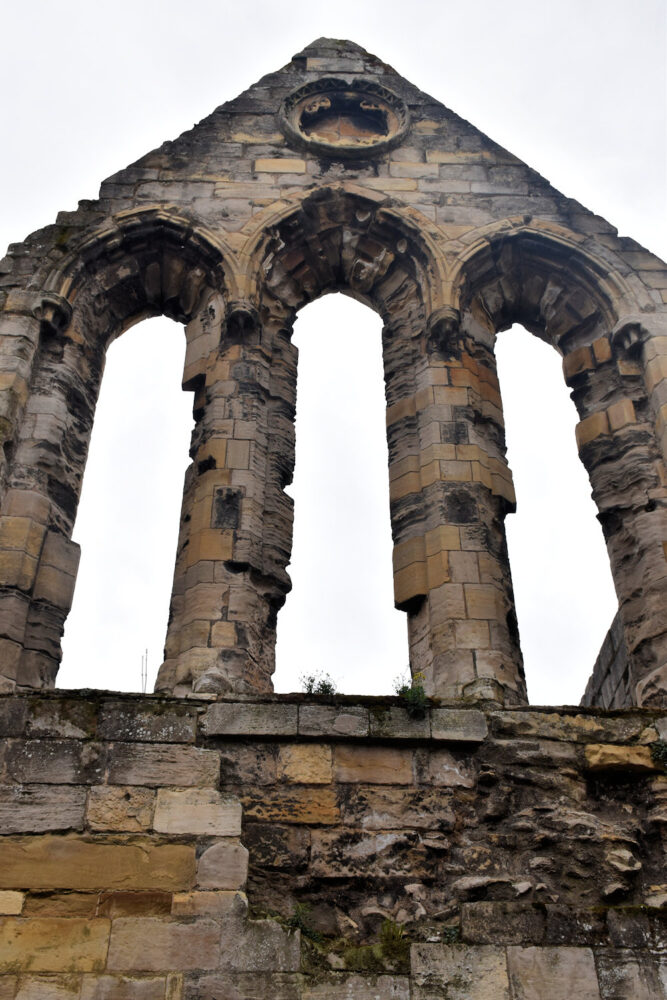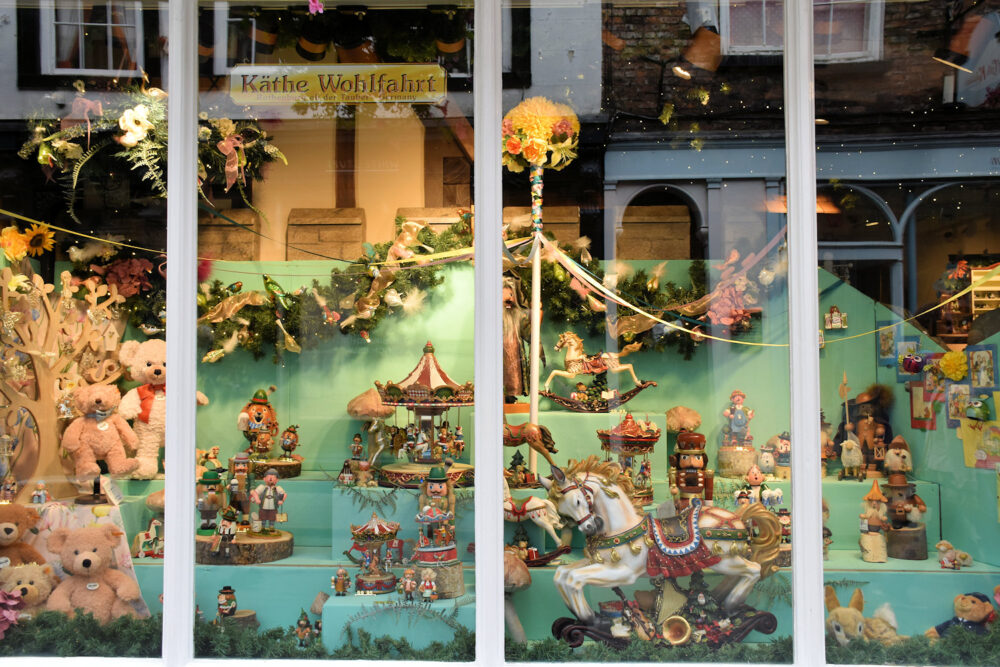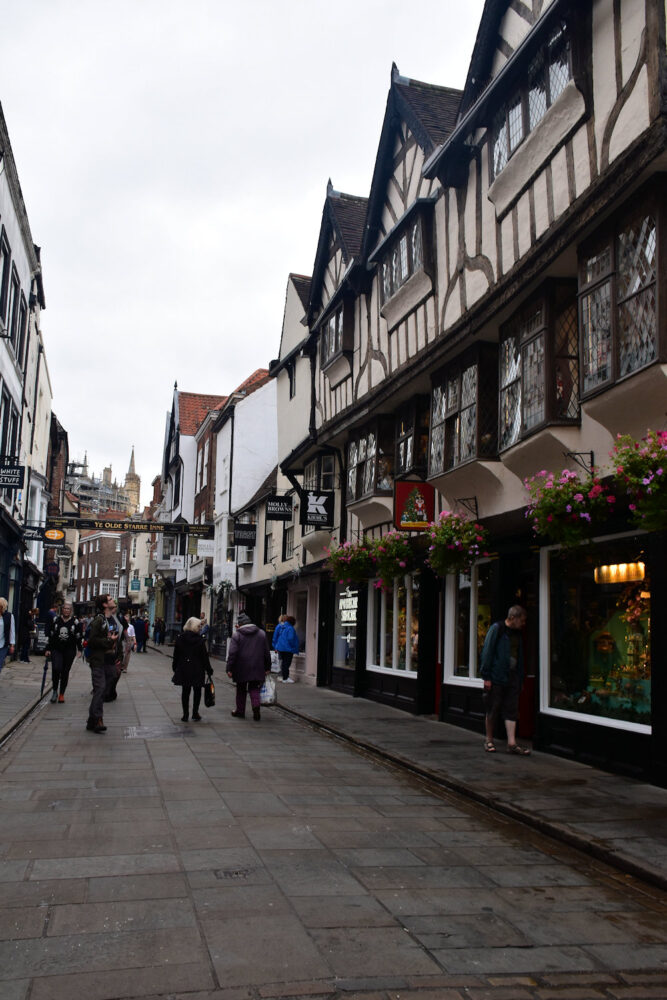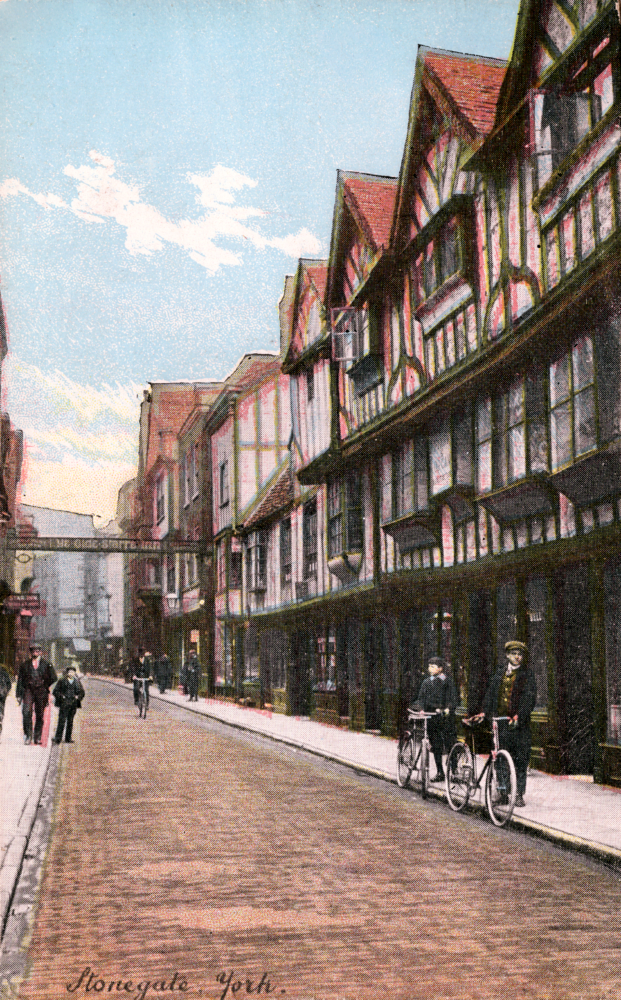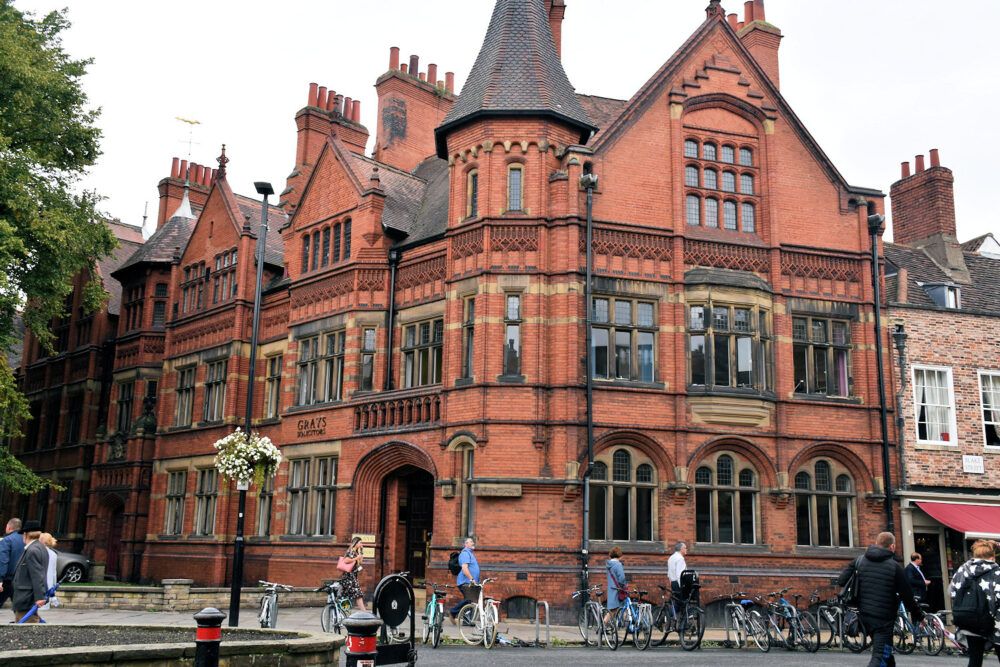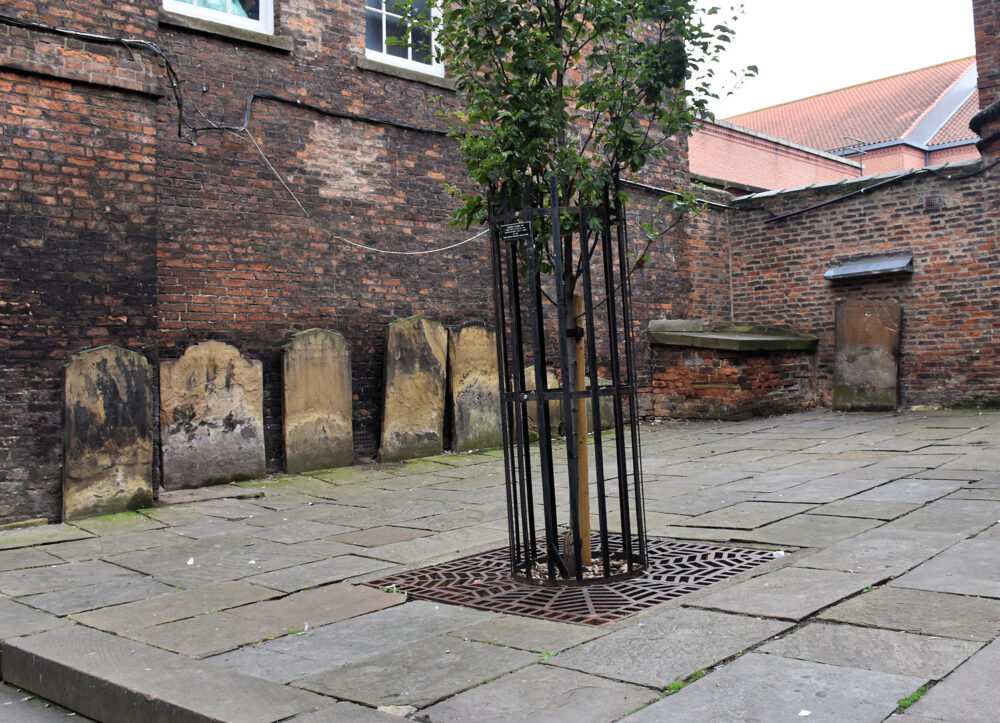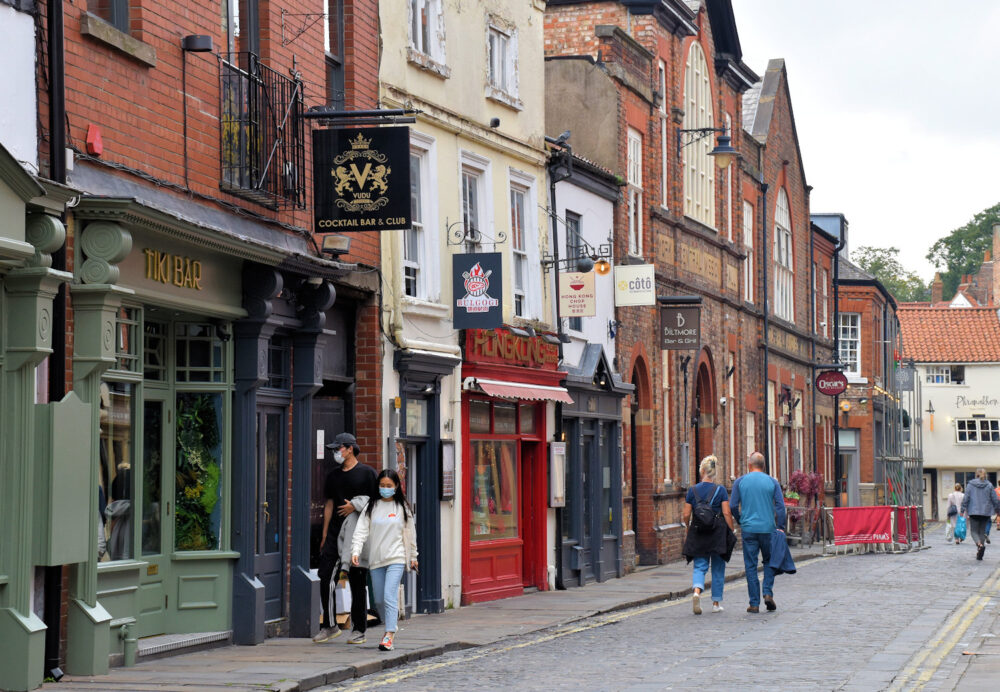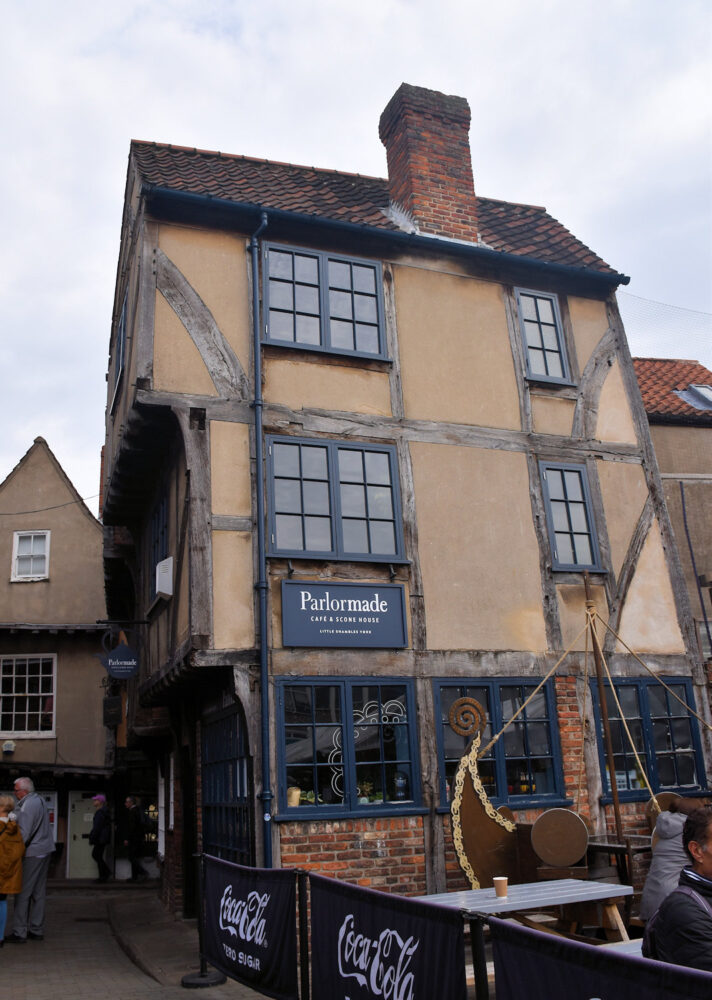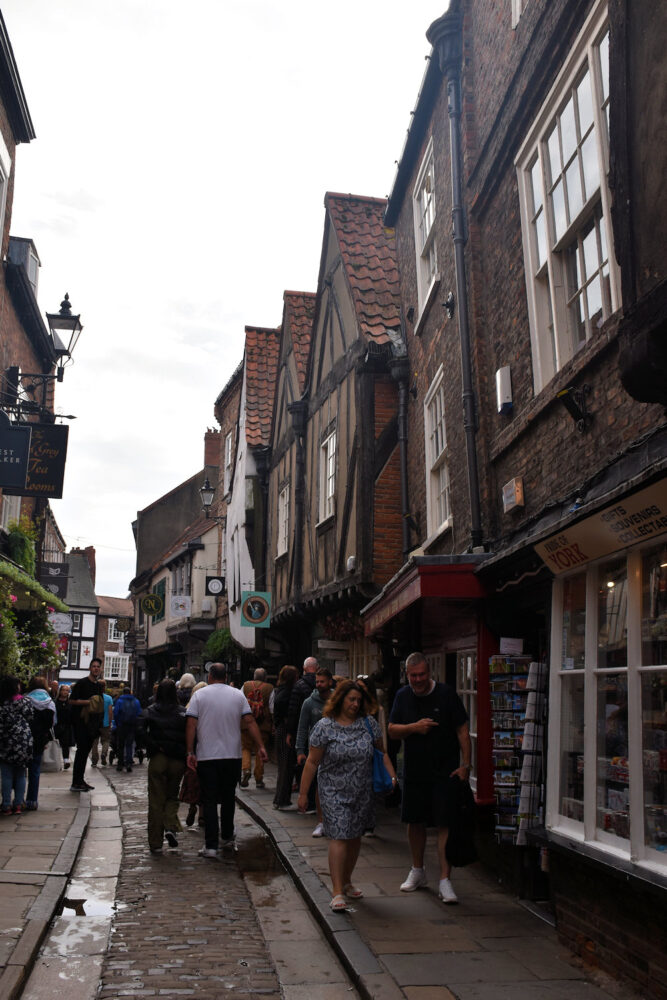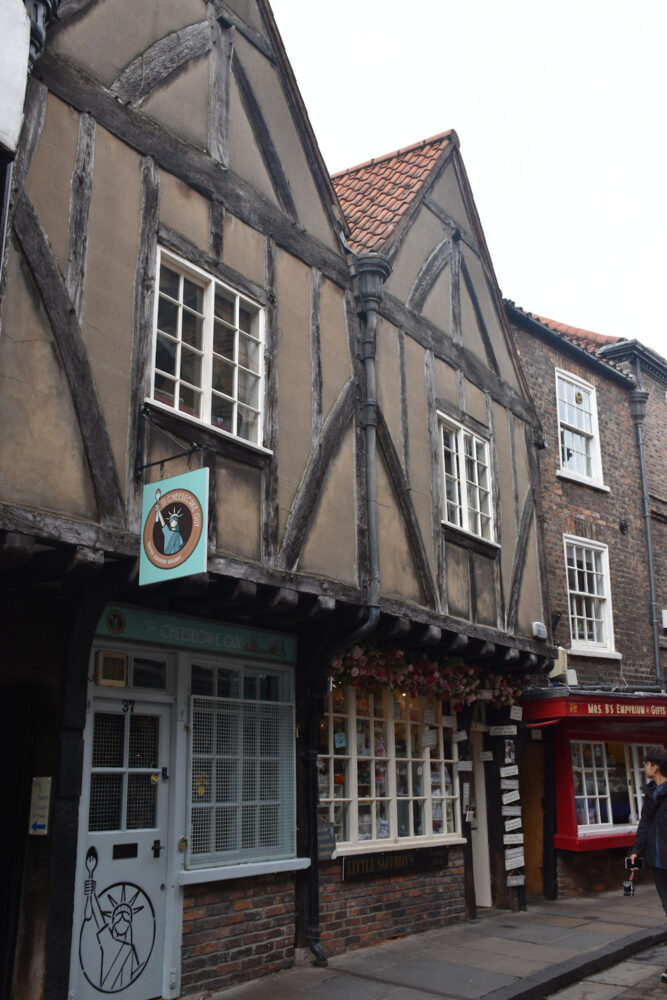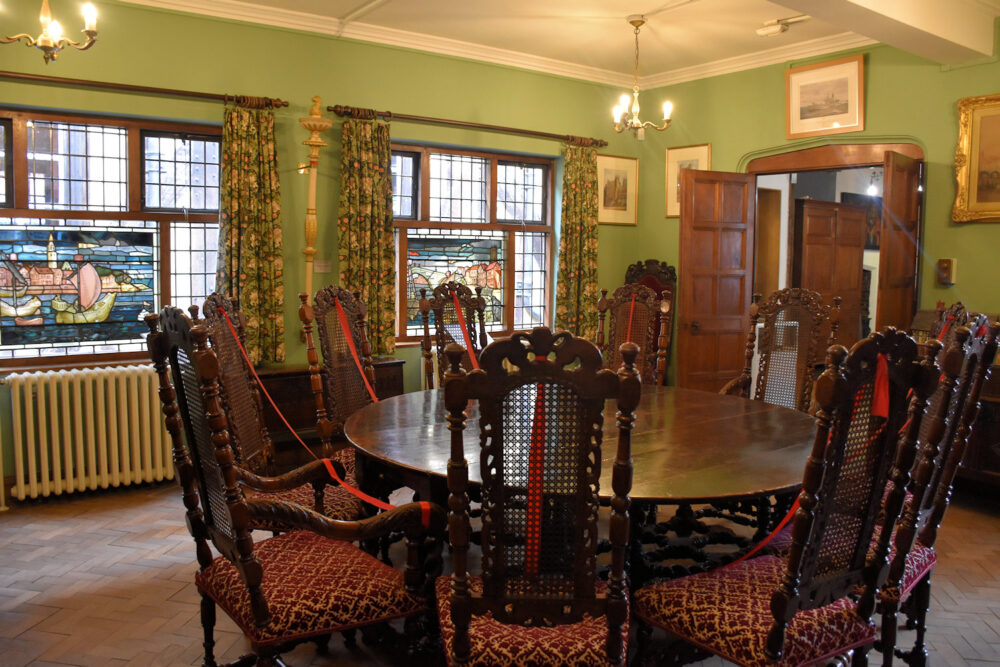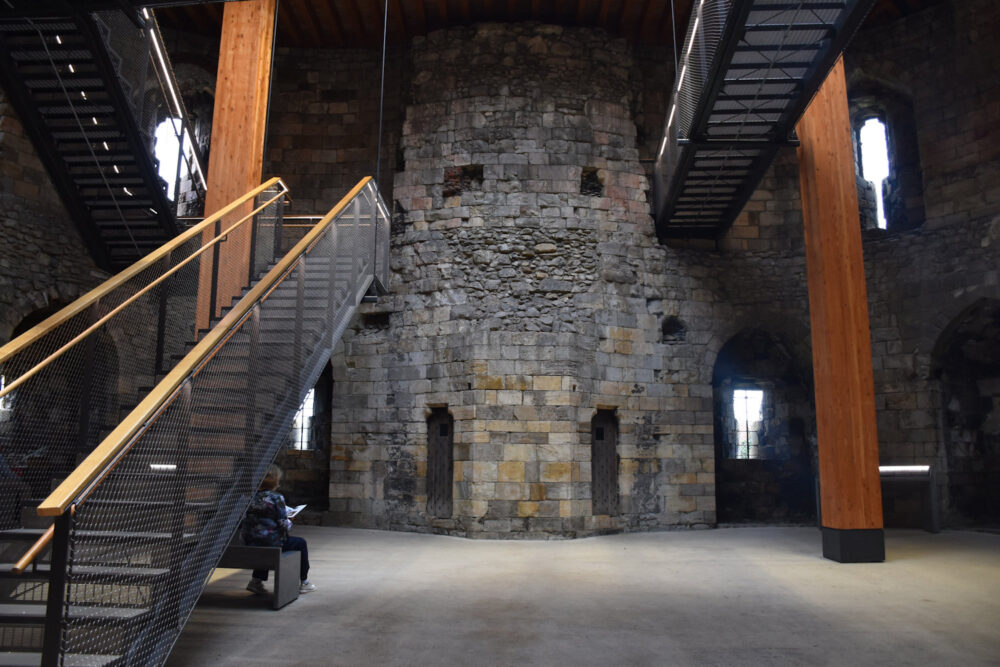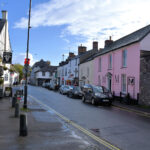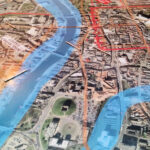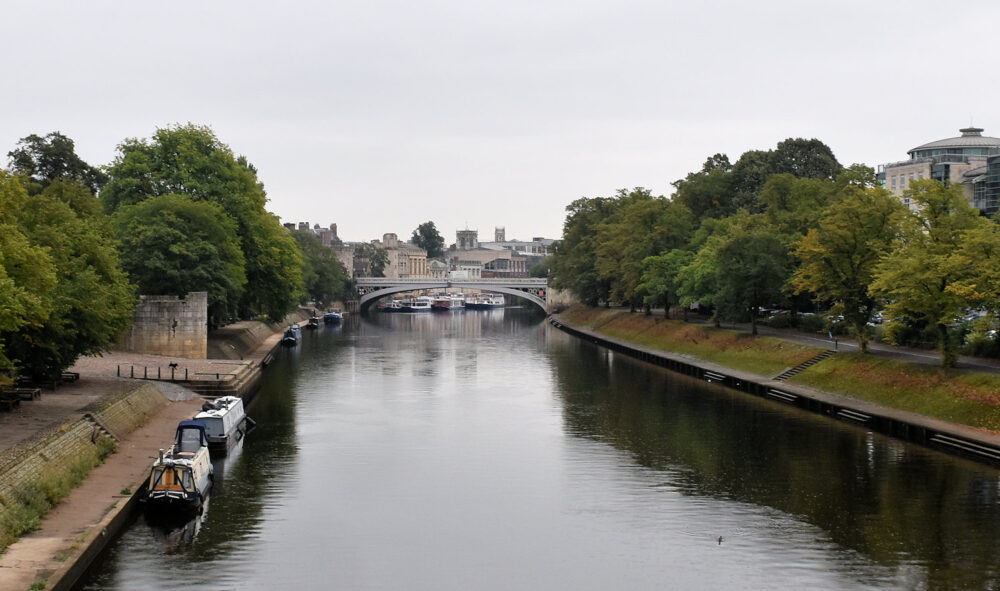
This was the Roman city of Eboracum from about 70 CE to 400 CE. Ahead on the left of the river was a large fortress, built for the 9th legion, covering about 50 acres. On the right side was the town. Today we call it York.
There are a lot of photos. It was one of those see how you can do in a day trips. A lot, as it turned out. More than I expected. So it’s just a couple of photos from each place I went to and some random buldings along the way. But none of the interesting corners and details photos. I might do some individual posts later. (Quietly ignoring that I am just going to get more days like this, and not enough time to do posts. But if you’re interested in something, I can share some more photos.)
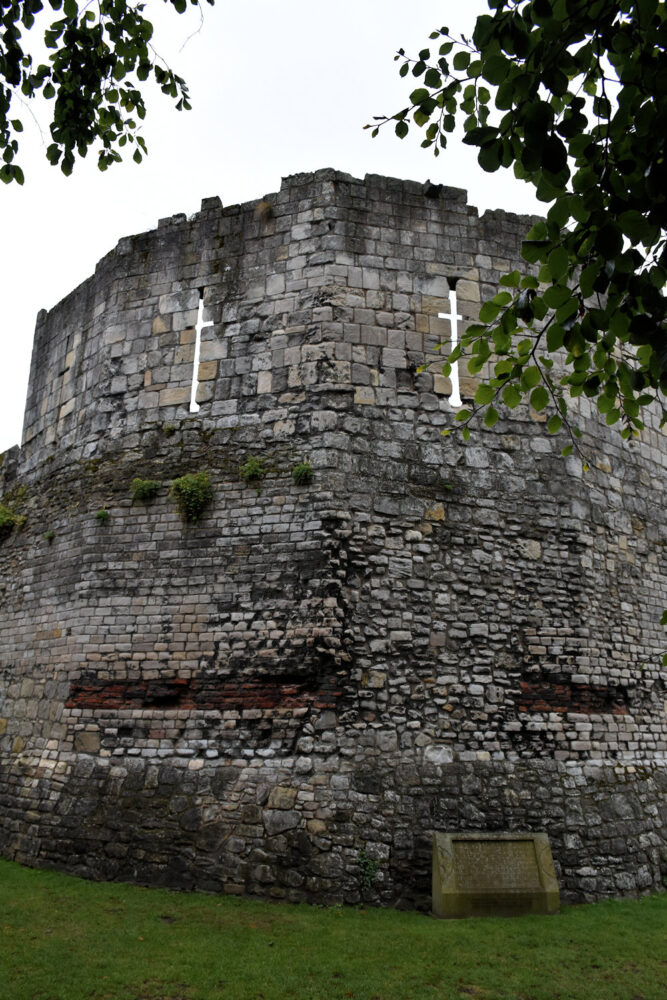
The Multangular Tower. The lower smaller bricks are Roman. The top part is Medieval. It was part of the fortress wall, built in the early 4th century and replacing an older tower.
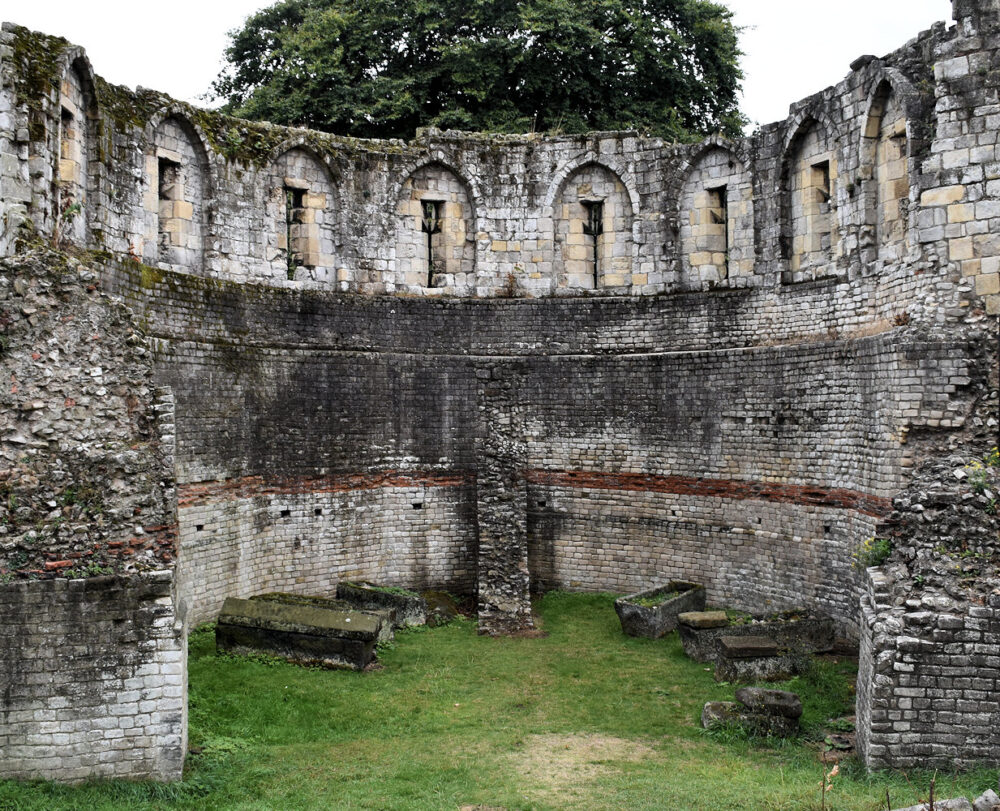
It has an inside! Well, an inner bit, and some Roman coffins. (Brought from elsewhere.)
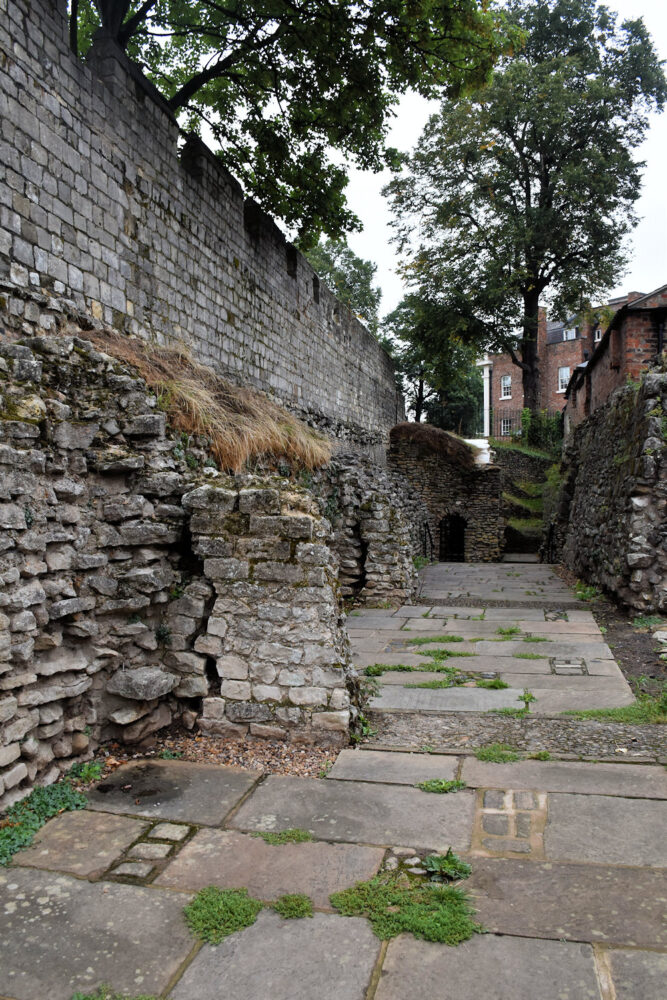
Now, if you turn away from the tower and look along the wall, you’ll see another smaller tower.
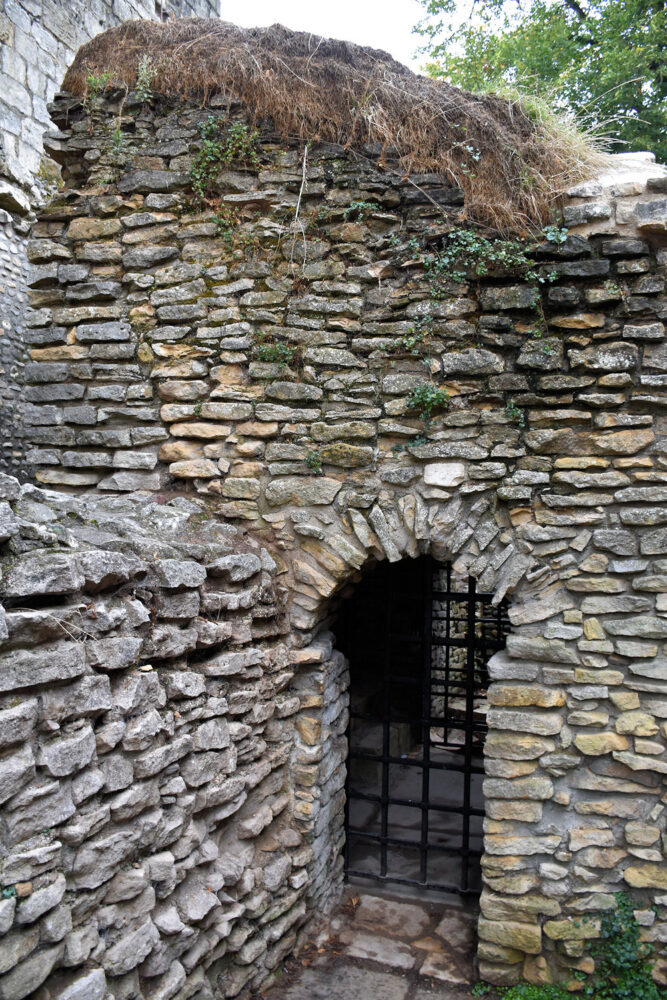
The Anglian tower. Just a small room with a door on either side. “We don’t know when it was built. We don’t know what it was used for.” Probably built mid-7th century – mid-9 century. May have been part of the wall fortification. Might have had more floor/s above it.
It’s particularly interesting because all the other existing Anglo-Saxon structures in the country are churches, and this is not.
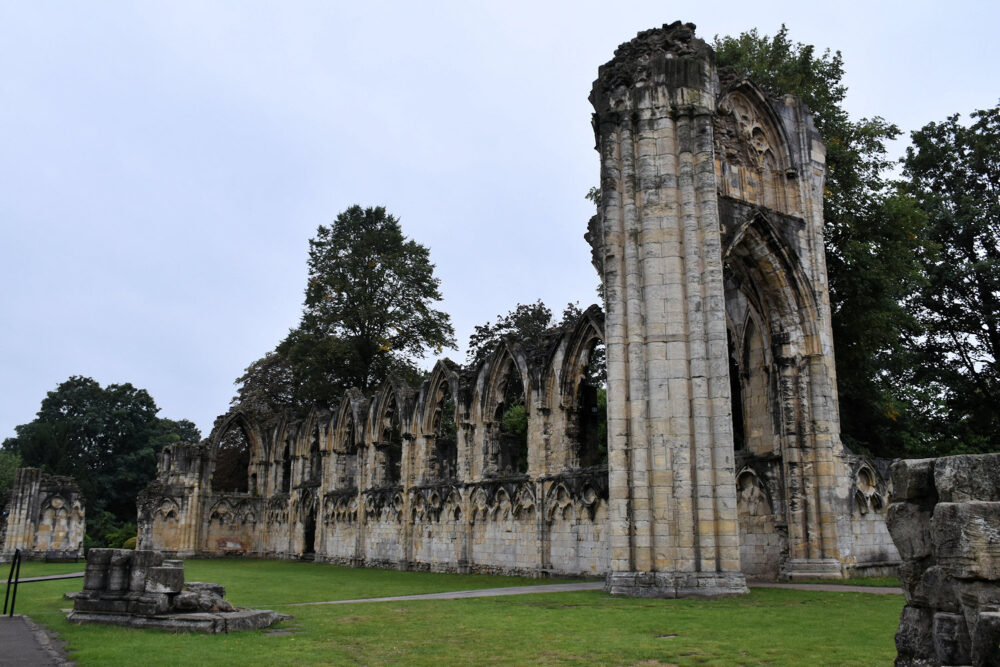
The church of St Mary’s Abbey, a medieval monastery. It fell out of use when Henry the VIII went around getting rid of the all the monasteries. (And that’s about as much Tudor as you’re going to get, apologies for anyone who’s into that period.)

Here it is 110 years ago. Hasn’t changed much! (That’s not so silly a comment. The earlier postcards are from a time when romantic ruins were still a thing. Ivy coloured walls and all. The modern approach is more about revealing the original structure. You can see the ivy on the walls in the postcard.) More about abbey and postcard here.
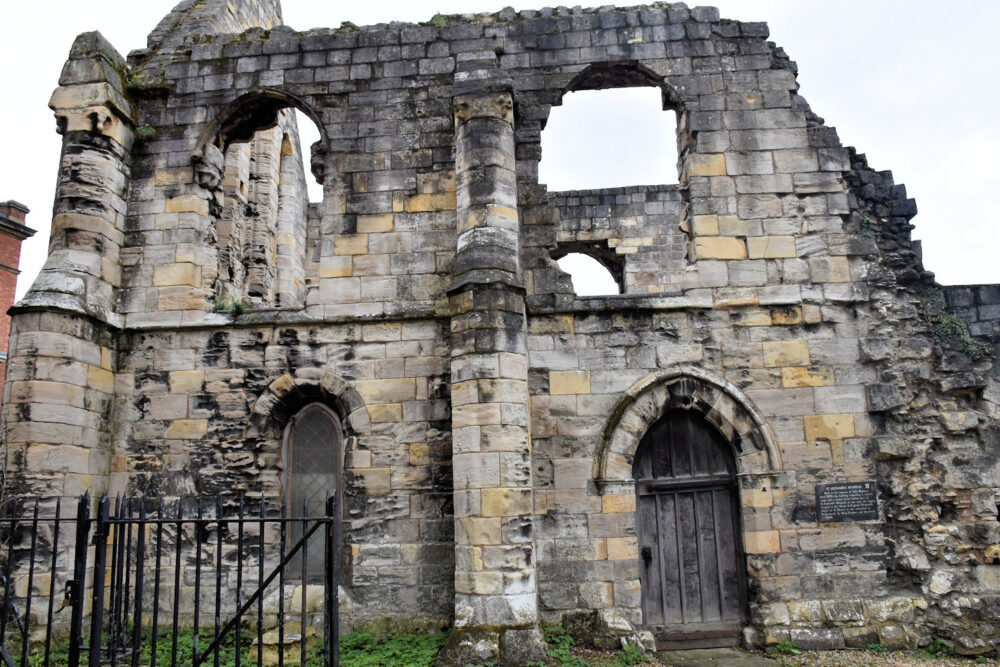
The ruins of a Medieval Hospital. The plaque on the wall says:
“Built at the expense of John Romanus (died 1255) the building, comprising a vaulted crypt with a chapel above, formed part of St. Leonard’s Hospital, at one time the largest hospital in the North of England. Originally known as St. Peter’s, it was refounded as St. Leonards by King Stephen and dissolved in 1540.”
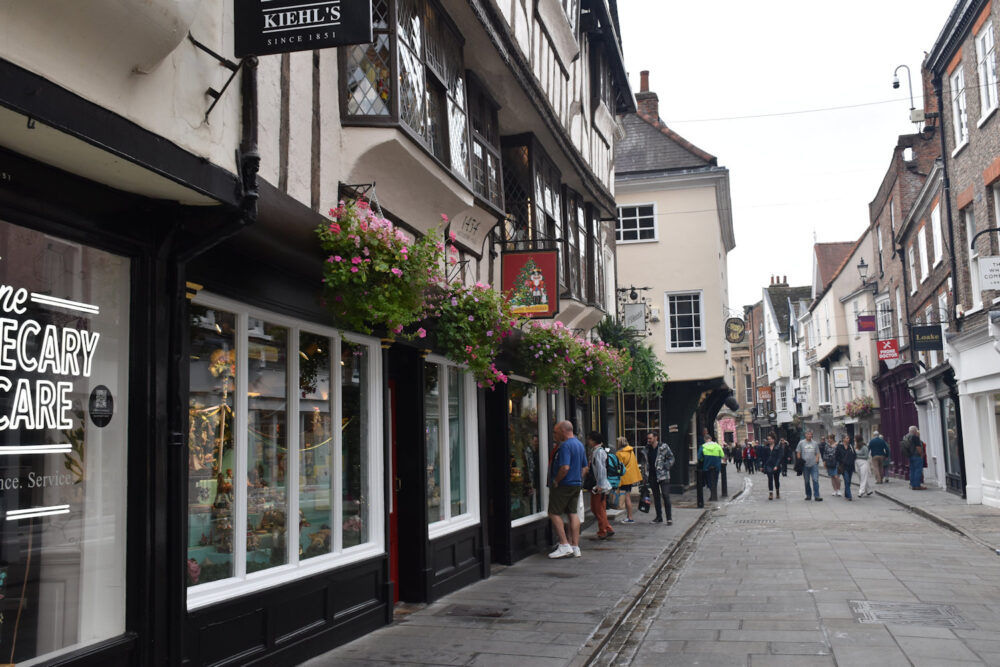
This is Stonegate, a street full of interesting shops.
Also hasn’t changed much from the 1900s (that’s 1901-1909). It even has the “Ye Olde Starre Inn” sign across the street. You can find more about the street and postcard here.
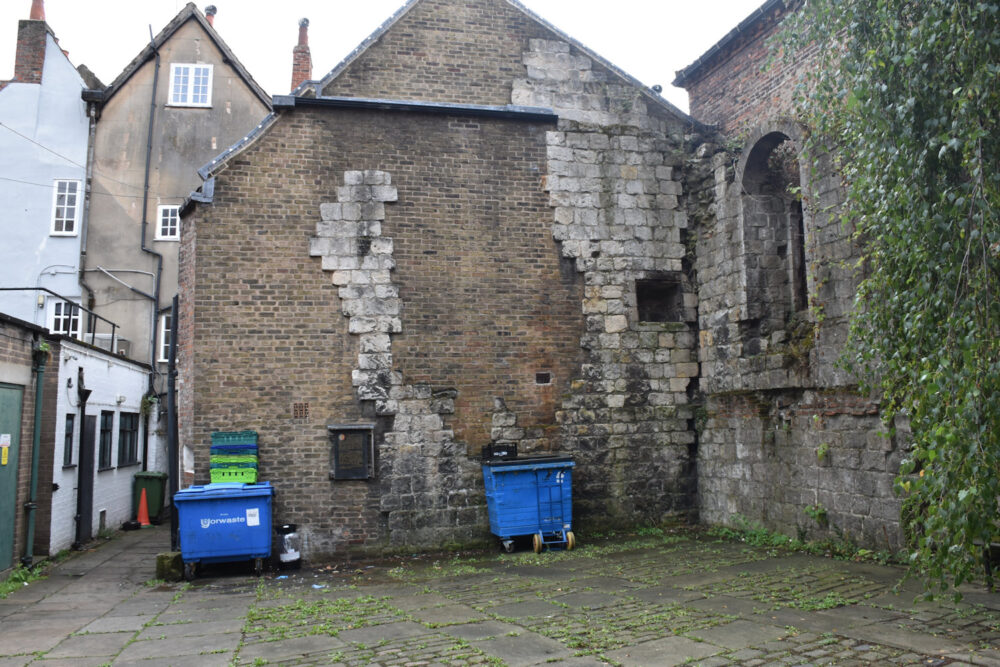
Along the street that’s a door that leads to the passage to a yard behind a shop where they keep their rubbish bins.
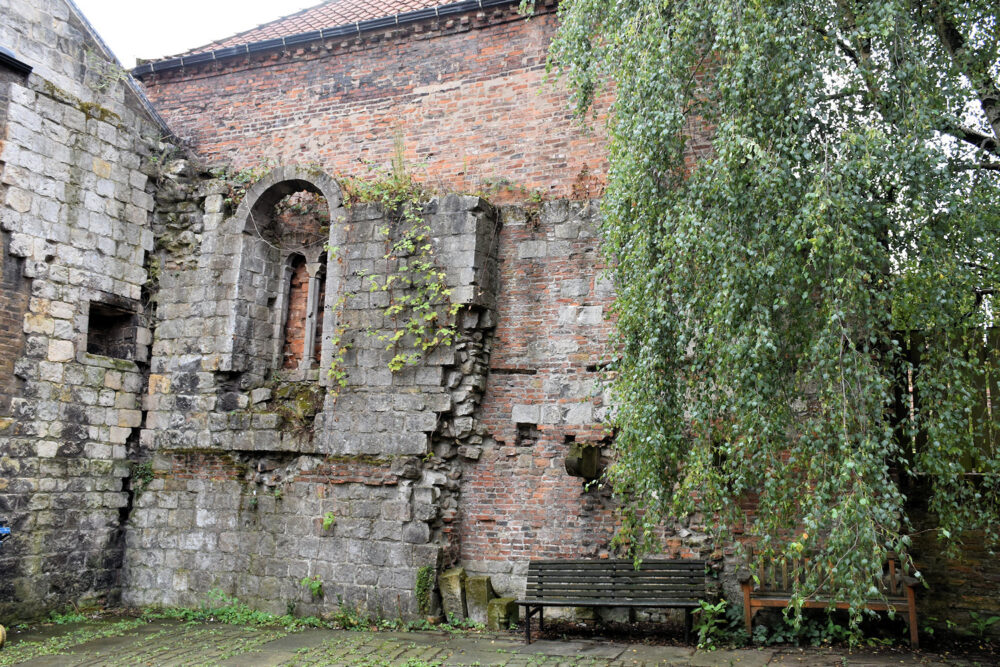
And on the side there there are the remains of a Norman/12 century house. (Oldest surviving house in York apparently.) The plaque on the wall says:
“Originally a two storey building of good Norman freestone, it would have had an undercroft of wood supporting the first floor which was probably also of wood. The hall on the first floor was lit by windows, one of which remains and has a shaft with a water leaf capital between the two lights. The windows were rebated at the inside for shutters but were never glazed.”
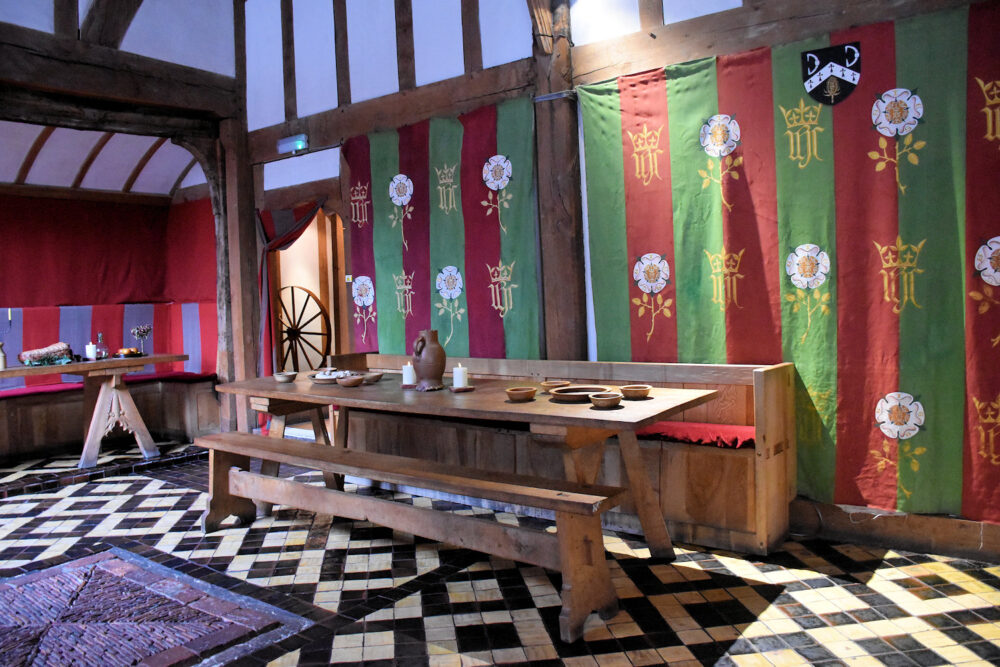
Also just off Stonegate is Barley Hall, a restored 15th century house. “Restored” to the extent that it feels like a recreation. But it was interesting.
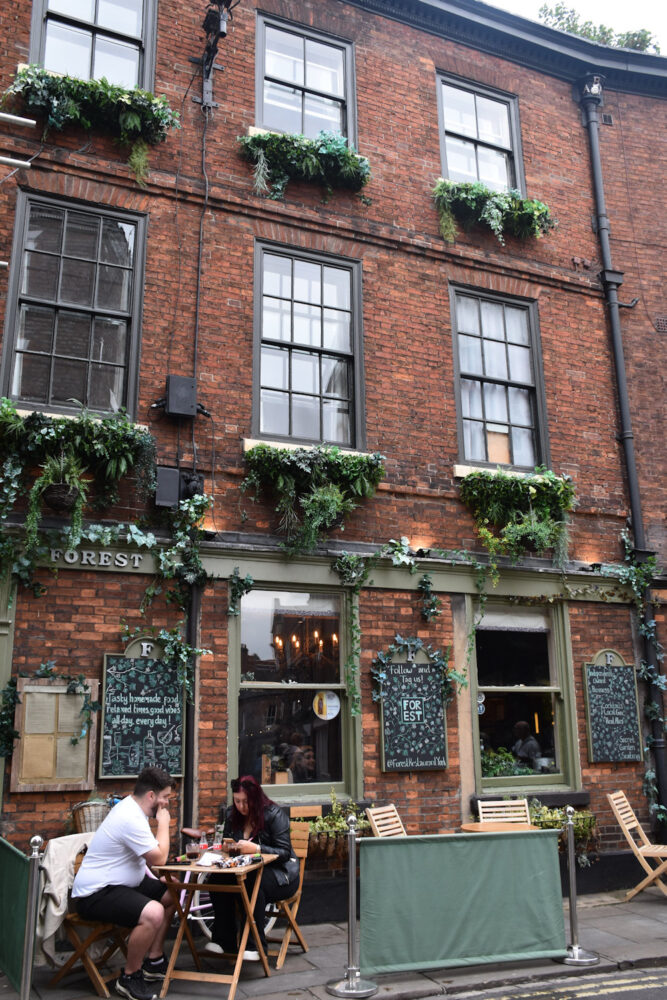
A restaurant, where I didn’t get lunch. (Not many cafe places around here.)
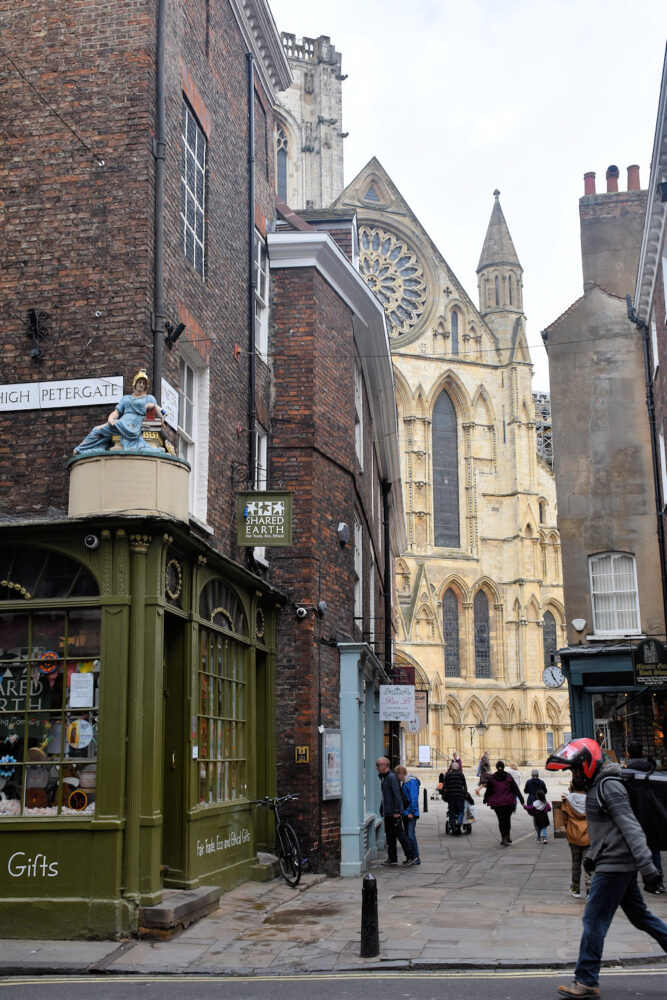
On the map, the minster looks back from the other streets away. Obviously it’s not.
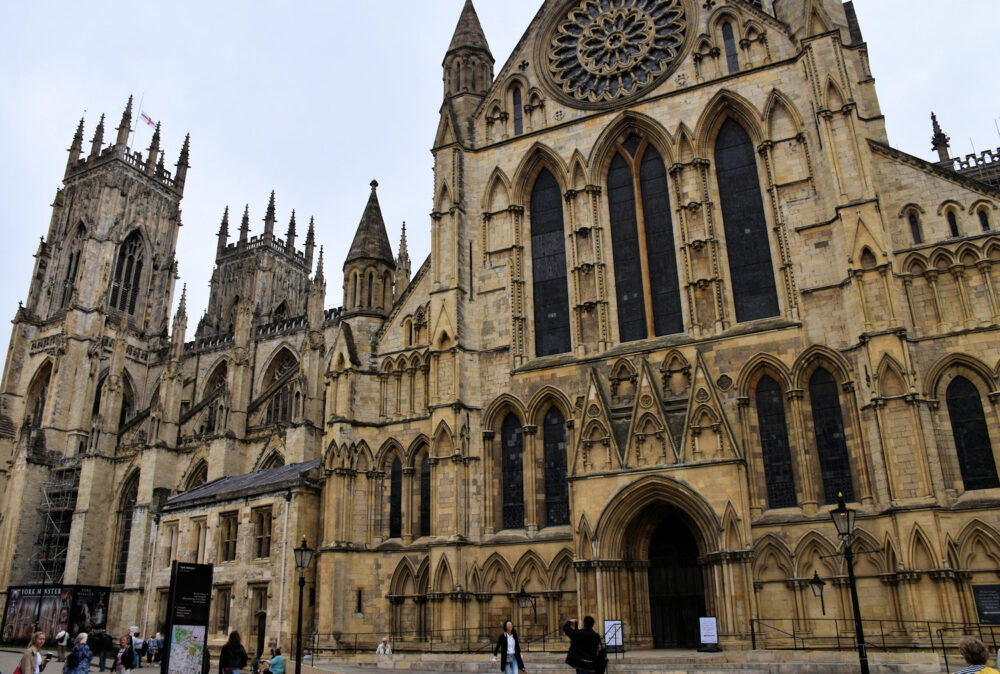
York Minster. Not sure there’s much point sharing a photo. It’s photos it looks rather ordinary. In real life it’s a different “Oh!” (Look, I don’t say “Oh!” at many things. This is one.)

There is a Roman column nearby. Just standing there as people walk past and ignore it. It’s from the basillica, now under the minster.

Usually there are tours of the minster but they’re not running because mourning & all that. It’s only open for quiet and service. But if you want to see inside.
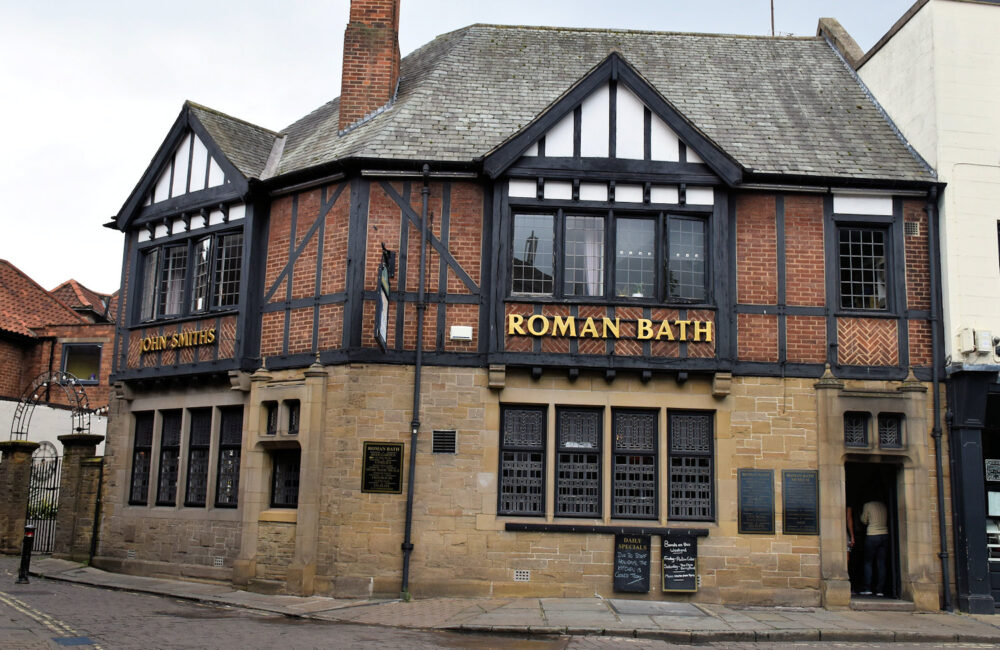
This pub is called the Roman Bath.
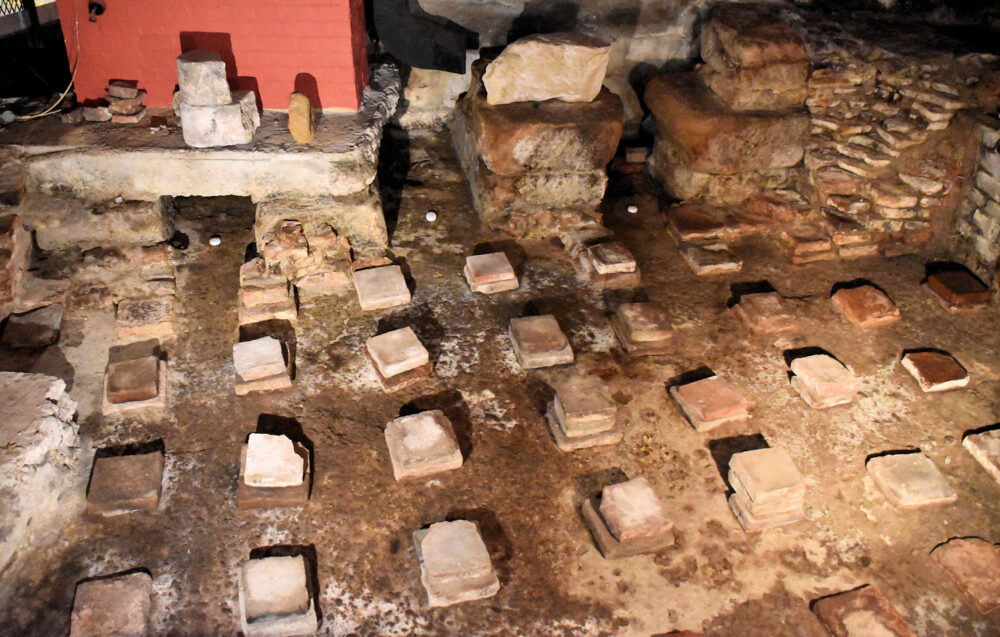
Because there is a Roman Bath underneath. Part of the fortress. This is the caldarium (the hot bath). Roman baths had a series of baths of different temperature.
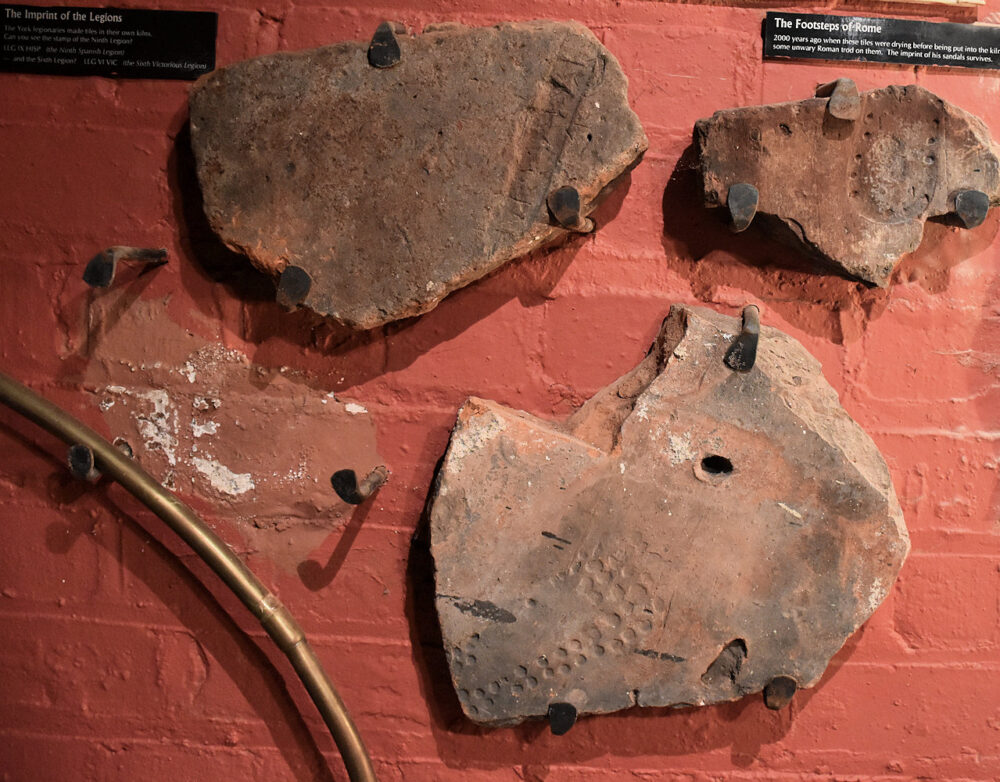
Tiles, with footprints on them
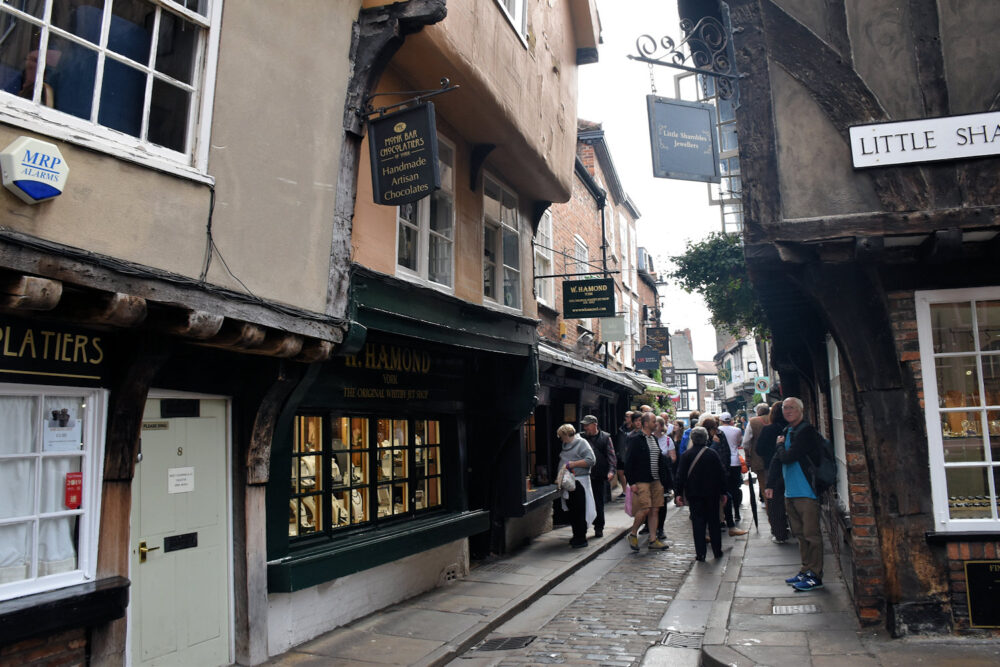
The Shambles, another street of interesting shops but narrower and more interesting.
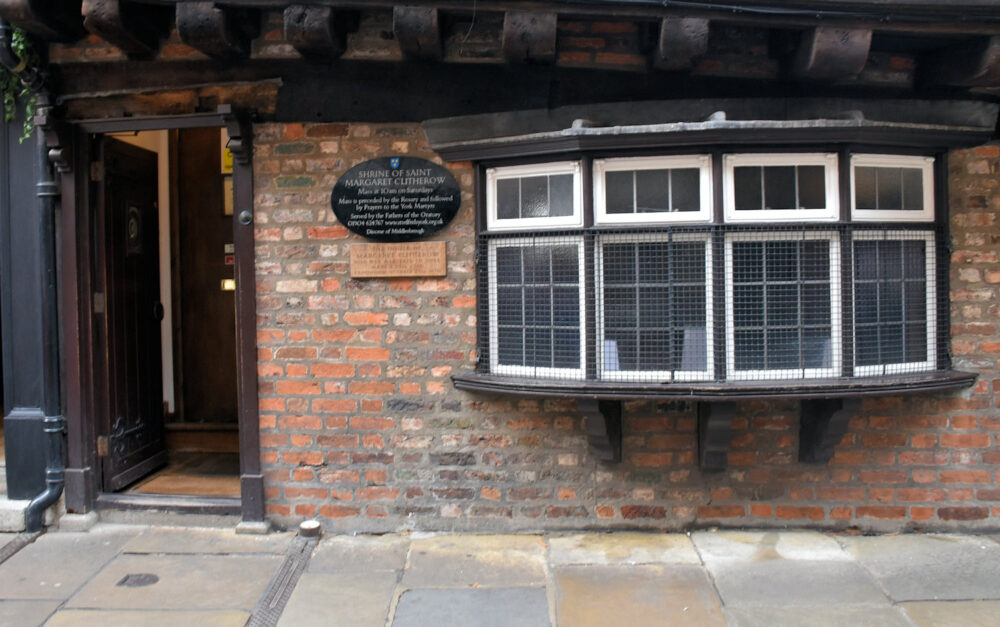
About halfway along there’s this shrine of Saint Margaret Clitherow, who was martyred in 1586. (Inside, it’s just a standard small chapel.)
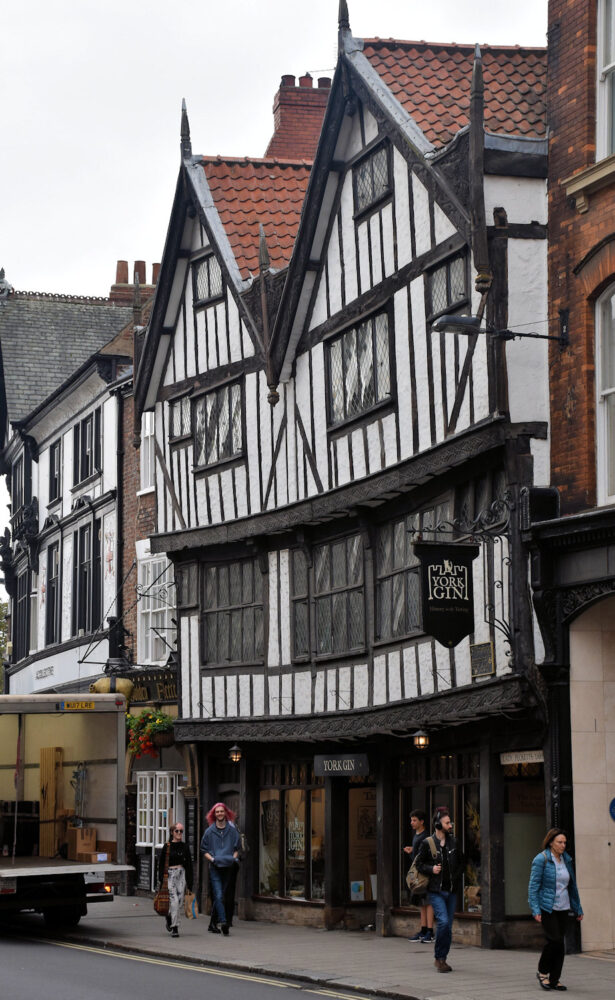
Another random building in a random street.
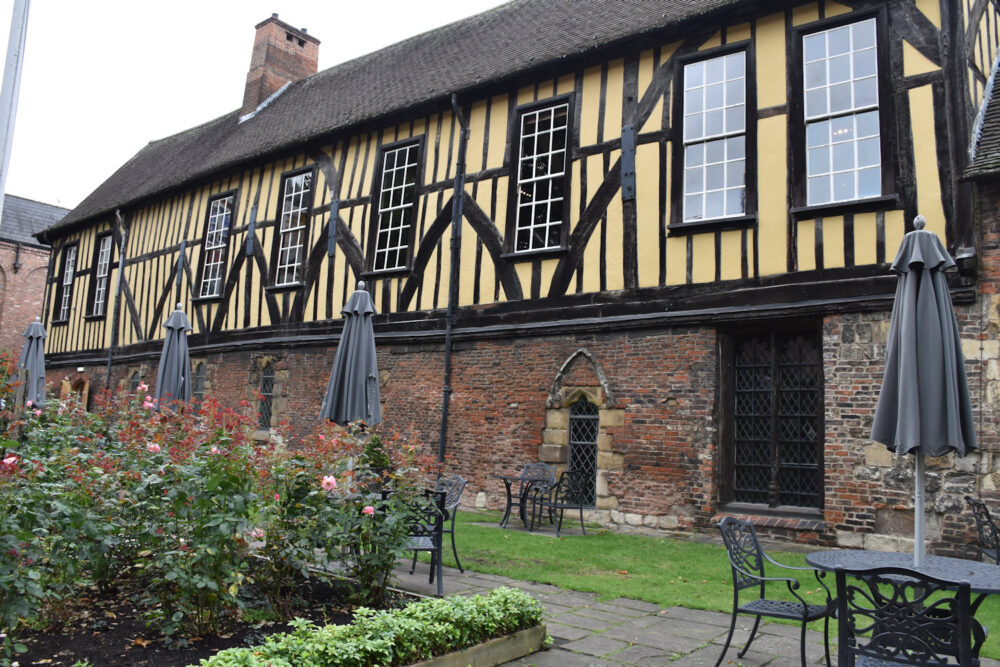
The Merchant Adventurers’ Hal, a medieval guildhall.
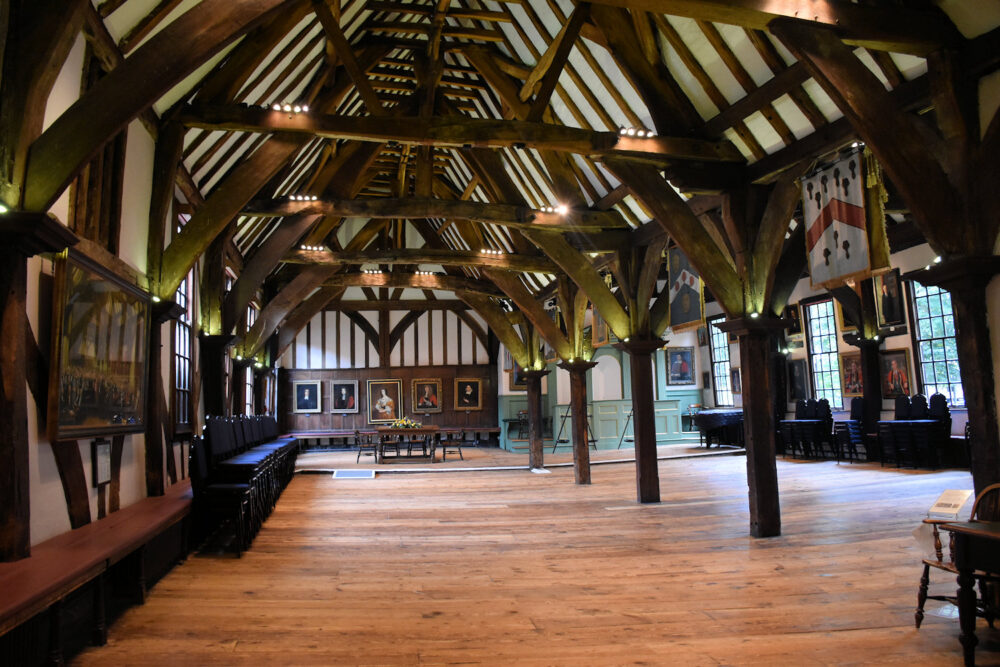
The Great Hall, an impressive room and certainly not what I was expecting when I walked around the corner.
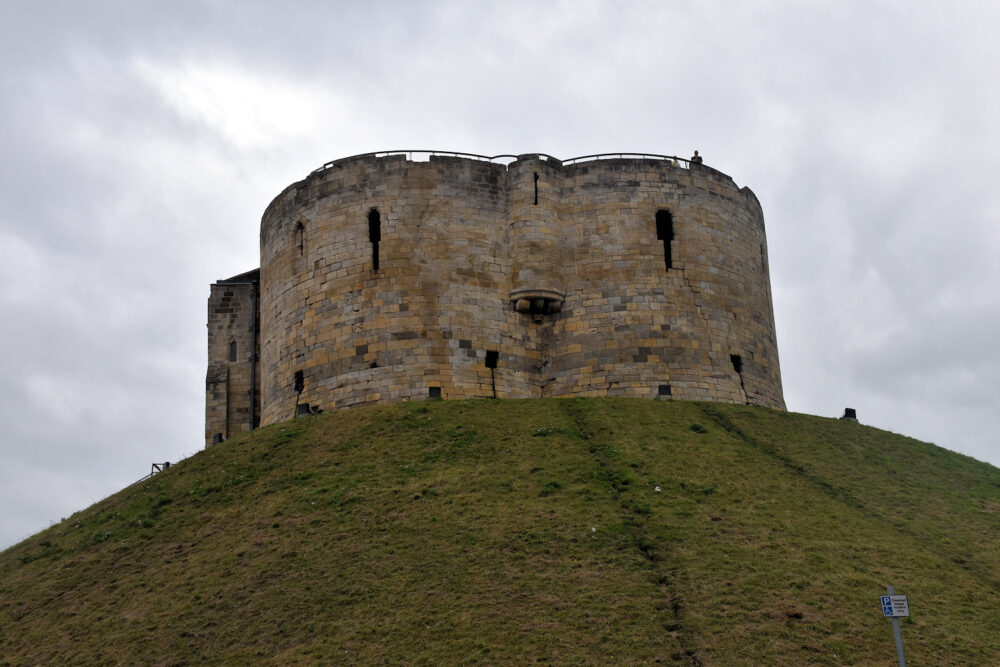
Clifford’s Tower is the remains of York Castle. I just intended to walk past and take a photo on the way to the nearby museum. But as I was approaching the car park, I looked across and saw this rising above the car park. Another much more impressive in reality building (and yes, an “Oh!”).
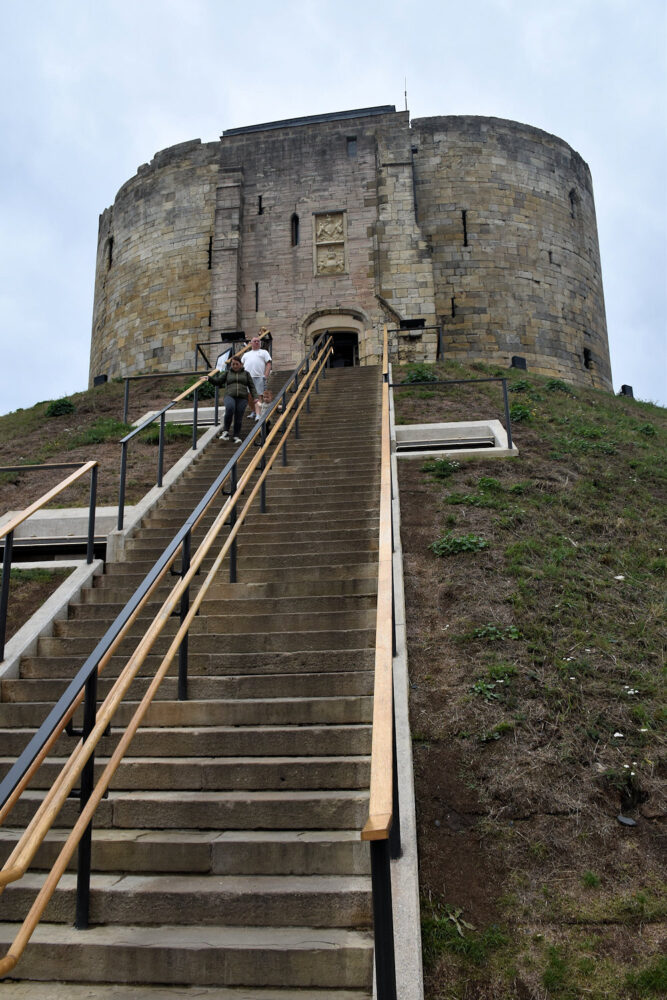
So I climbed up the stairs for a look. The stairs have rest spots! Although it turned out, coming down was the hard bit. (Placing of the steps was a bit off so it was one step at a time.)

It’s a good view from the top! To the left (behind the trees, between two stone buildings) is the last sto of the day.
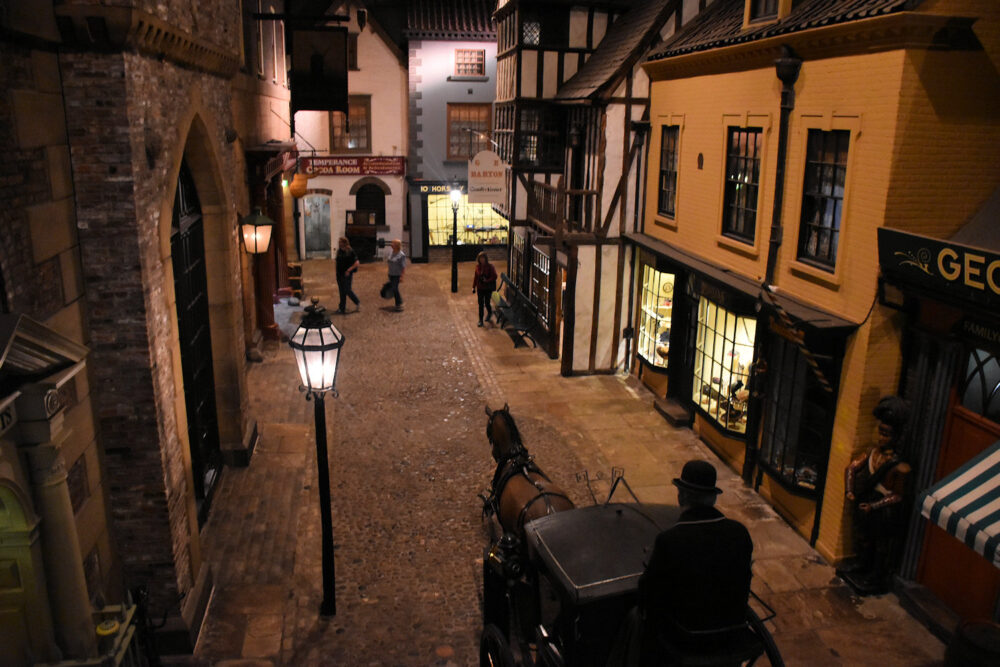
The York Castle Museum (so-called because it’s on the site of the castle) is full of recreated rooms from different eras, and complete Victorian street. An interesting end to the day.
